In his fourth Bundesliga game as the head coach of Hertha Berlin, Jürgen Klinsmann could celebrate a victory over Bayer Leverkusen. With a 4-1-4-1 defensive block and fast counter-attacks, Hertha Berlin beat a Leverkusen side that suffered structural issues in possession.
In the following tactical analysis, we will unveil Hertha Berlin‘s defensive tactics and Bayer Leverkusen‘s problematic positional play.
Formations and lineups
Peter Bosz lined his side up in a 4-1-4-1 which turned into a 4-3-3 with narrow wingers in possession. Usual striker Kevin Volland played on the left wing while Lucas Alario as the number nine. French attacker Moussa Diaby was lined up on the right wing and supposed to utilise his pace and dribbling abilities.
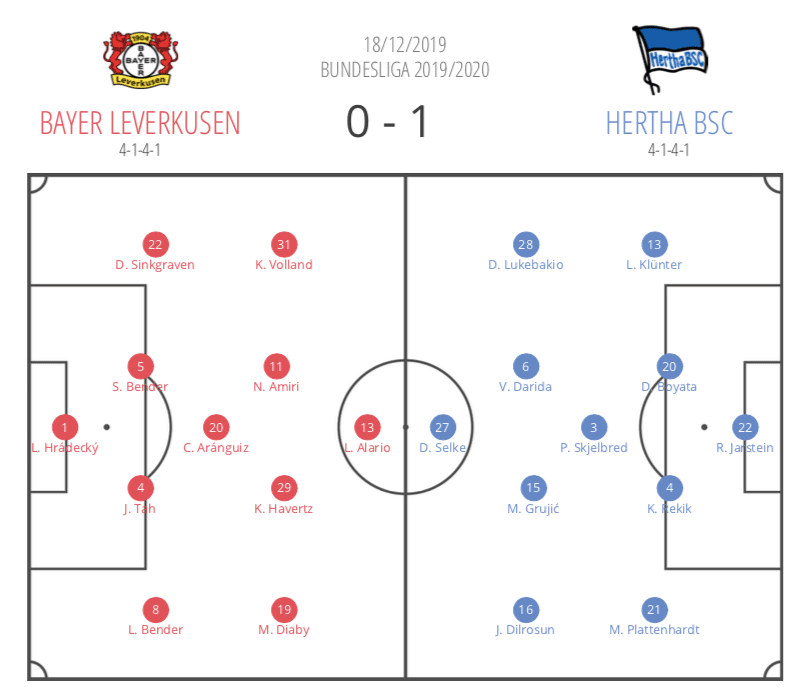
Berlin, on the other hand, deployed a rather defensive-minded 4-1-4-1 formation. Head-coach Jürgen Klinsmann lined up Per Skjelbred as a holding midfielder in front of the back line to prevent Leverkusen’s creative midfielders from receiving between the lines. Midfielders Vladimír Darida and Marko Grujić were supposed to serve the fast attacking trio consisting of Davie Selke, Dodi Lukébakio and Javairô Dilrosun with through balls in transition moments.
Hertha’s 4-1-4-1 defensive block
As already mentioned, Hertha Berlin set up in a 4-1-4-1 shape when defending. Klinsmann’s side mainly defended as a low-block within their own half.
Single defensive midfielder Skjelbred man-marked Kai Havertz and therewith reduced the influence of the young playmaker on Leverkusen‘s positional attacks. As one can see below, the Norwegian midfielder rather stayed tight with Havertz than to defend the space in front of the backline.
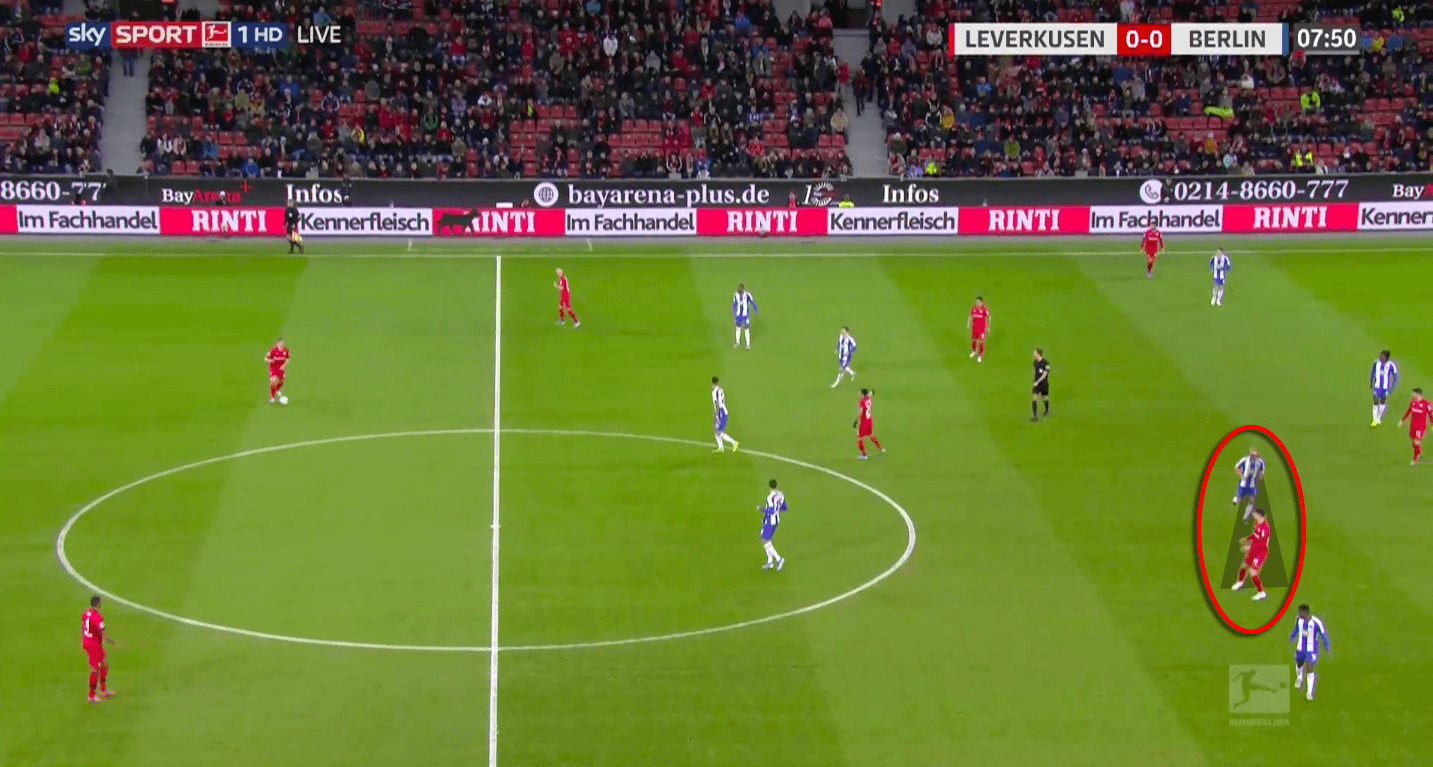
Klinsmann also stuck to this defending approach in the second half of the game. Since the two lines of four closed down passing lanes in the centre of the pitch, they could prevent Leverkusen from playing through central areas in most of the cases. As one can see below, Berlin defend the centre of the pitch. Meanwhile, there is free space on the flanks. Nevertheless, Bosz’s side often failed to take advantage of that as they did not constantly provide width on both sides.
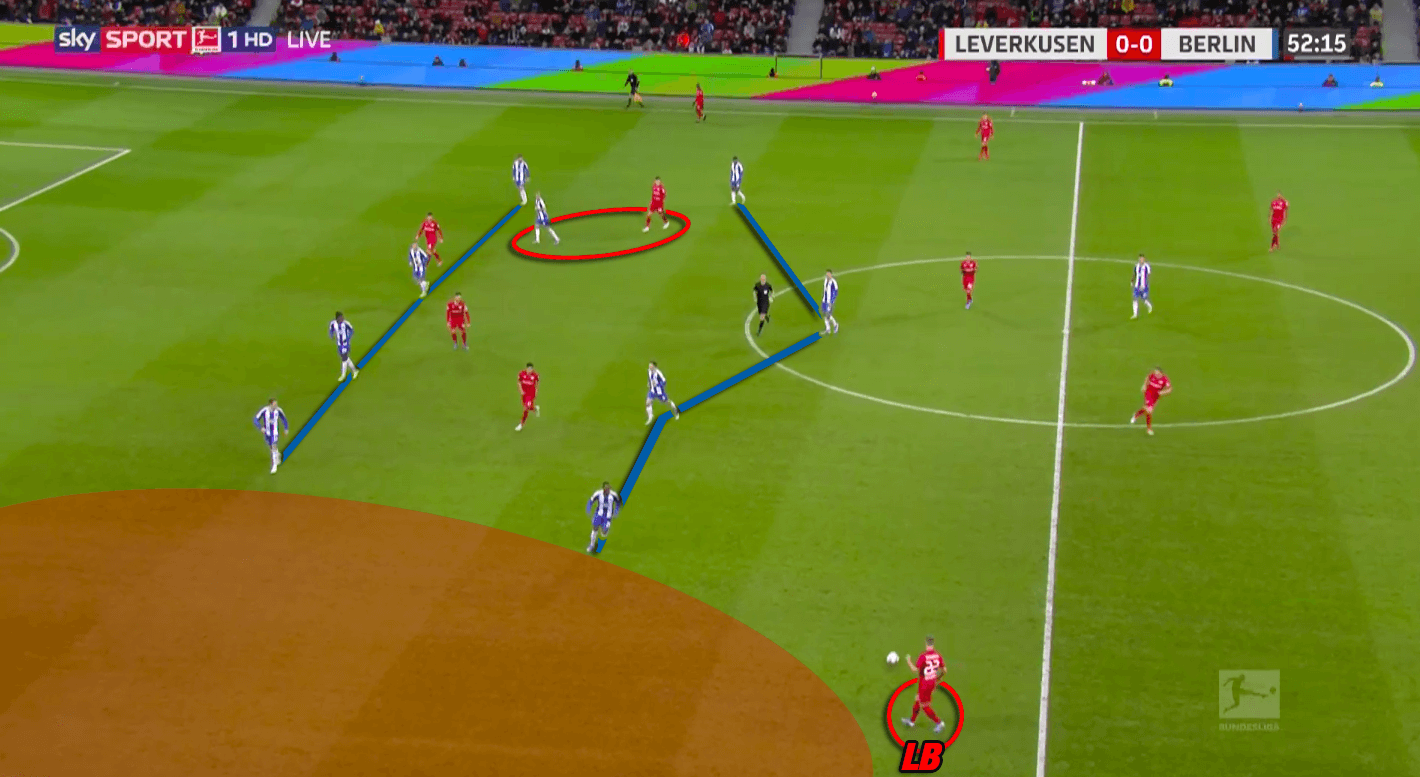
Leverkusen’s problematic positional play
Hertha‘s defensive movements created a hole within the centre of the formation as the advanced midfielders (#6 and #15) moved out to press Leverkusen’s central defenders (see below). However, Leverkusen were unable to exploit this space due to numerous reasons.
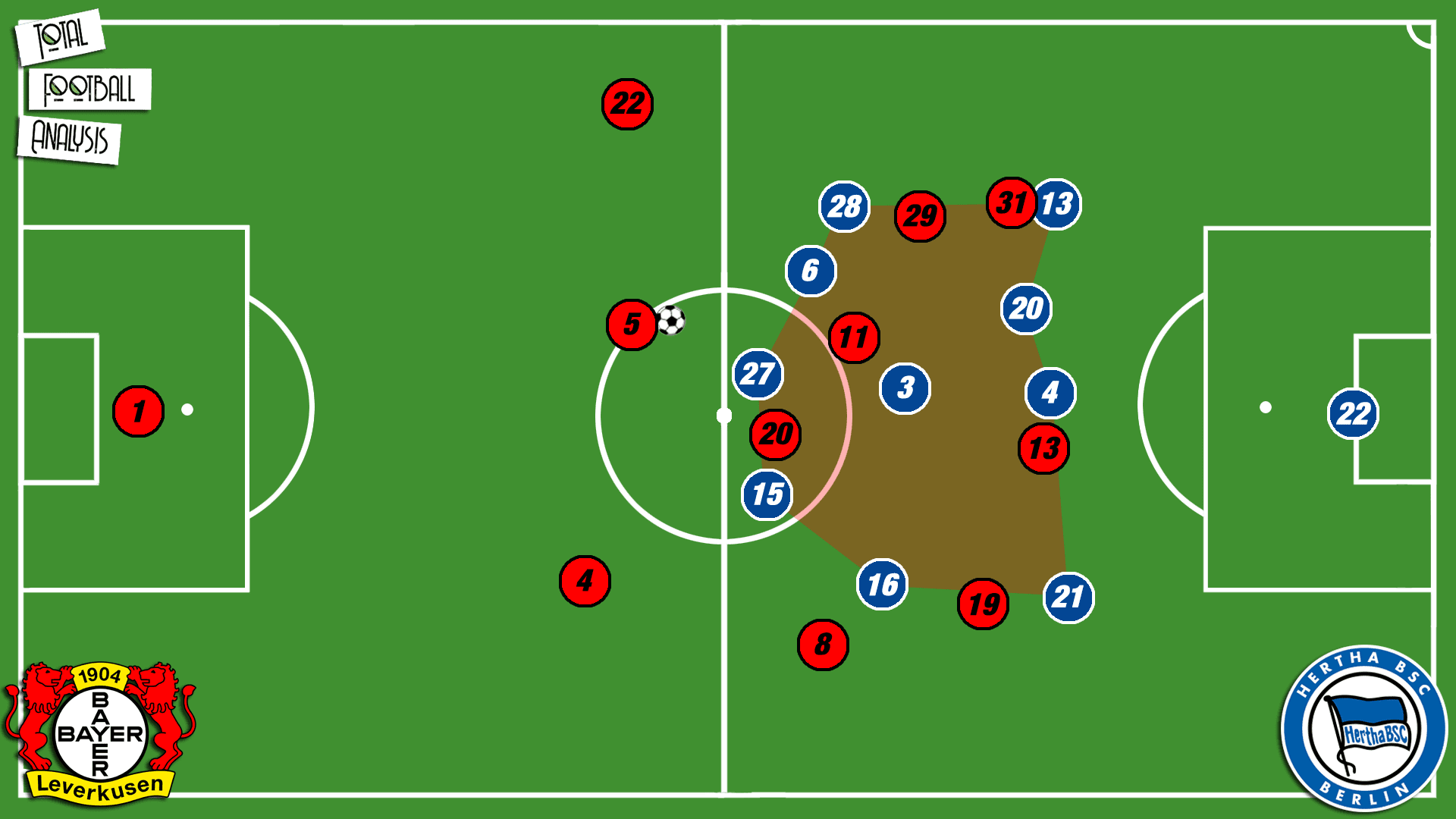
One of the biggest issues of Leverkusen’s attacking structure was their missing occupation of the flanks (especially the left). Left winger Volland (#31) liked to tuck inside forming a 4-3-3 shape. As a consequence, the opposition left-back could also move into a more central area (#13) which decreased space. Moreover, in these scenarios, Volland was positioned in the half-space and therewith in the same channel as the left advanced midfielder (#29 in the situation displayed above). This is disadvantageous as it enables the opposition to cut off the passing lane to both players with just one player.
With their advanced midfielders positioned in the half-spaces and their wingers providing width, Leverkusen could create progressive passing lanes. In the situation below, Leverkusen set up as described and therewith confront Berlin’s defensive midfielder with their two advanced midfielders. As a consequence, Leverkusen can diagonally play into Hertha’s block overplaying midfield.
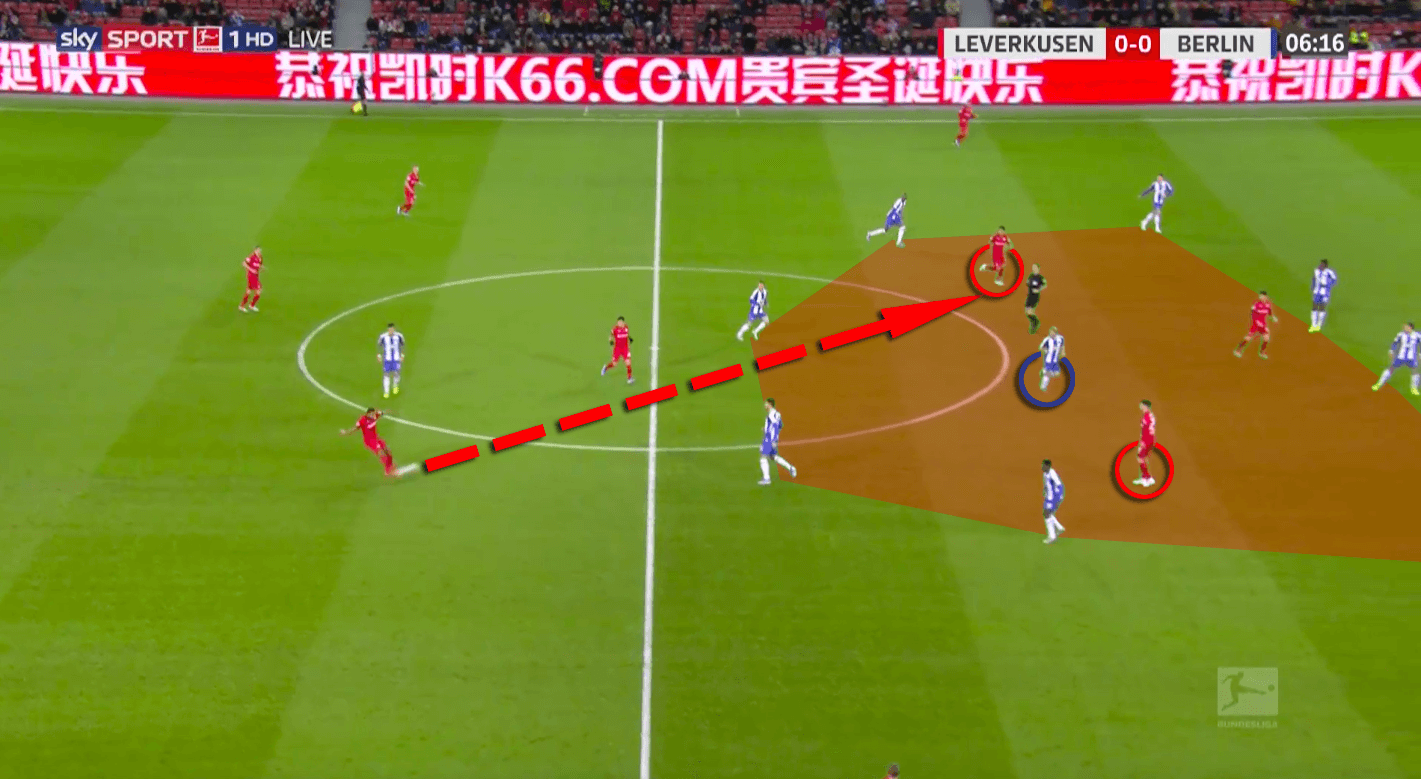
The average positioning and passing network below shows that this was not the case very often though. Leverkusen played a lot of horizontal passes. That was because of their structure. Despite their wide attackers tucking inside, Leverkusen’s full-backs did not move up the pitch. As a result, this formed a flat four during build-up. With this shape, they relied on their central midfielders. And with Havertz being man-marked and Nadiem Amiri being rarely in a position to receive a pass, Bosz’s team struggled to penetrate the opposition block.
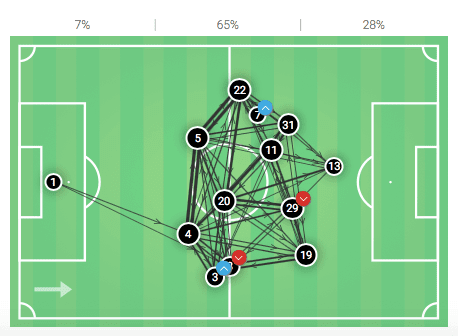
Due to Hertha’s compact block which offered only few space to combine in the centre, Leverkusen’s most promising attacks included crosses from wide areas. Often winger Diaby would utilise his pace and dribbling qualities and send in a cross while striker Alario and ball far winger Volland occupied the penalty area.
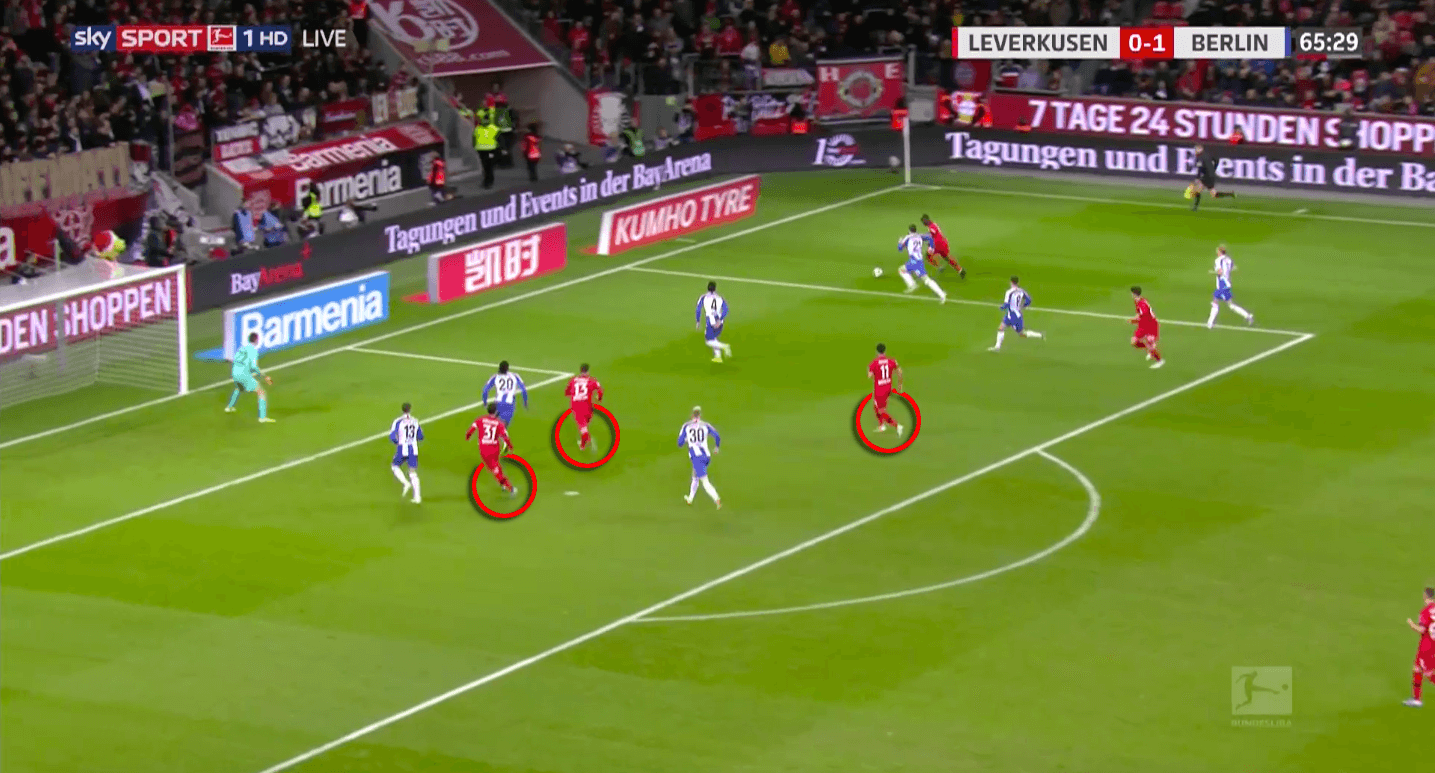
Nevertheless, Berlin’s centre-backs were well prepared to defend these crosses. As one can see in the image above, their defenders stay tight with the opposition attackers. That way, they were able to either clear the ball or at least prevent Leverkusen’s players to finish in a controlled way.
Berlin’s dangerous counter-attacks
Besides their successful defending approach, Hertha Berlin also created more promising opportunities than Leverkusen throughout the whole game (Berlin: 1.27 xG ; Leverkusen: 0.97 xG).
Their main idea of threatening Leverkusen’s goal was to quickly get behind the opposition back line after winning the ball. Berlin’s wingers played a key role in these moments. As Berlin’s attacking department was superior to Leverkusen’s defence in terms of pace, their midfielders immediately looked for the deep pass like in the situation below.
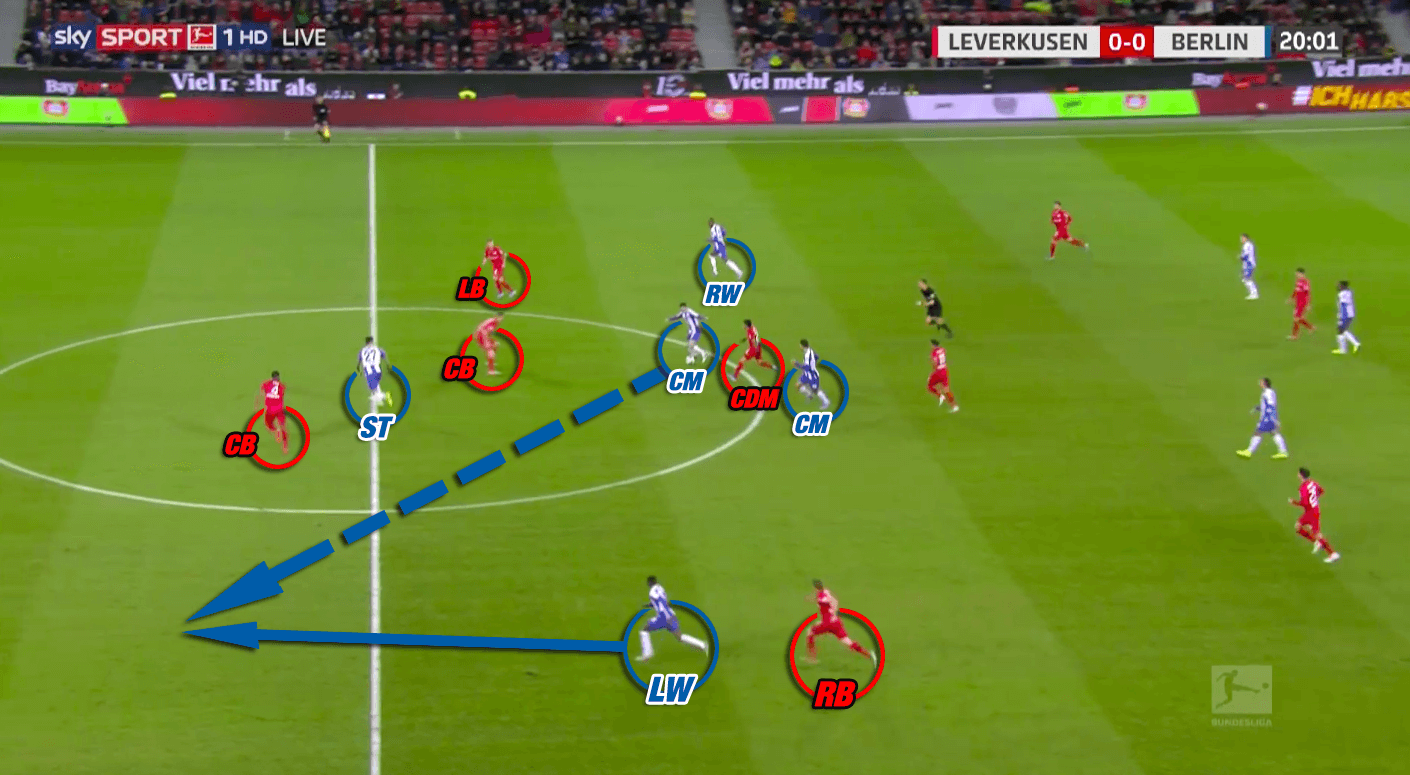
As one can see, left winger Dilrosun is already positioned closer to the goal than right-back Bender. That was only the case due to the deep positioning of Leverkusen’s full-backs in build-up though. Usually it takes wingers in a 4-1-4-1 quite long to move up the pitch in a transition moment because they need to follow the forward moving opposition full-backs. That way, Leverkusen would have been able to pin back Berlin’s wingers. But as right-back Bender and left-back Daley Sinkgraven stayed deep, they were forced into running duels in the back.
With their counter-attacks, Berlin did not only create chances but also relieved themselves of Leverkusen’s pressure from time to time. And in addition to that, they could gain set-piece situations of which one led to their winning goal.
Conclusion
As shown in our analysis, Leverkusen were incapable of overcoming a defensive-minded Hertha side which relied on their fast counter-attacks. Therewith, Leverkusen remain without a goal in the last three matches and will need to find back to their attacking strengths in order to meet their high expectations of being a Bundesliga top team.
For Hertha, on the other hand, the win means three important points. Nevertheless, such a destructive approach will not work against many opponents in the Bundesliga.

If you love tactical analysis, then you’ll love the digital magazines from totalfootballanalysis.com – a guaranteed 100+ pages of pure tactical analysis covering topics from the Premier League, Serie A, La Liga, Bundesliga and many, many more. Buy your copy of the December issue for just ₤4.99 here





Comments